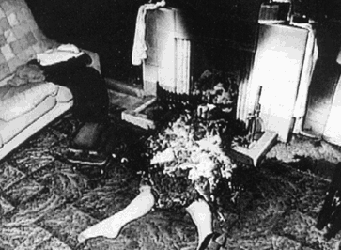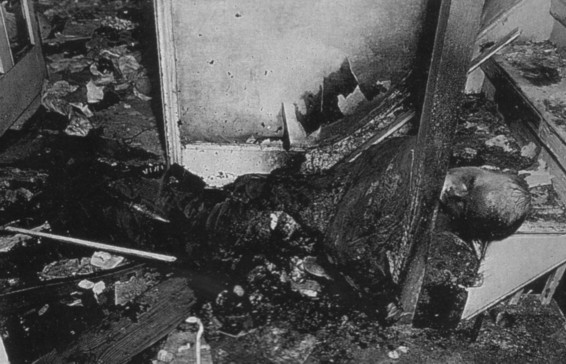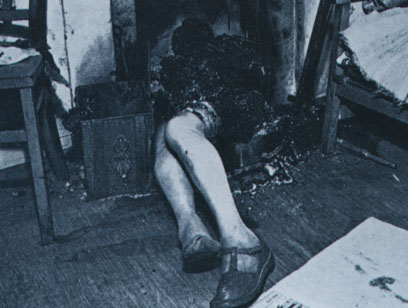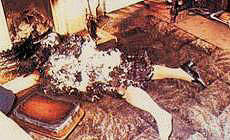

 |
 |
If a partially or almost entirely burned human body is found in a room or house that itself did not catch on fire, this strikes many people as mysterious, and needing a supernatural explanation. However, such cases occur often enough to be not particularly baffling to coroners. The original source of the fire is generally instantly evident. We can look for patterns—
Victims tend to be:
Comments: Naked human bodies are essentially noncombustible; they can't
be
set afire to burn by themselves like a candle.
Combustible substances can burn away
almost completely by a flameless, nearly smokeless
process called
“smoldering.” This process generally does not
spread beyond the material that is
smoldering, and advances along
the surface of an imaginary sphere.
Combustible clothing ignited by heat sources can by smoldering reach temperatures that liquify human fat (typically 200° C). The result is a “candle effect,” with the fat-saturated clothing then burning upward like a candle wick.
Carpet saturated with fat (or
linoleum sporting a puddle of fat)
in a small area can burn through a wooden floor to the basement.
If the basement is sealed, as it usually is, this produces a forced
draft, a “chimney
effect,” which produces total combustion only in the area directly
above the hole. Stairwells and real chimneys work well too, of
course!






If you have trouble visualizing smoldering, a lit cigarette is the classic example; no open flame, not much smoke, and left alone the cigarette will burn almost completely away, leaving a very fragile cylinder of ash. |
 |
 |
 |
 |